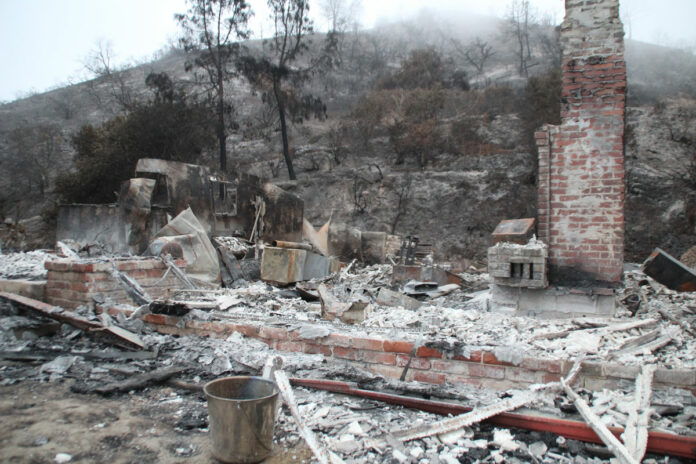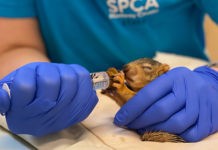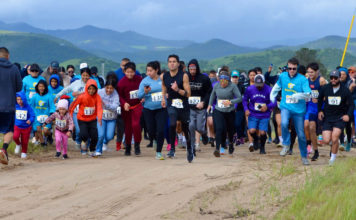
MONTEREY COUNTY — With the Dolan Fire nearing full containment and the River Fire no longer a threat to the Salinas Valley, Monterey County hosted a briefing last week about post-fire cleanup for those impacted.
“Just seeing the pictures, it doesn’t show the magnitude of the damage,” said Mary Adams, a Monterey County supervisor who hosted the Sept. 22 meeting.
According to Monterey County Chief of Public Works Randy Ishii, the cleanup process includes not only getting rid of debris and repairing damage, but also evaluating the watershed and making sure the fire didn’t turn the soil hydrophobic, which could lead to landslides. Ishii said the county plans to seek outside funding to assist with cleanups.
Dena Wilson, senior emergency services coordinator with the California Office of Emergency Services, explained the phases of cleanup. The first phase would take care of the many hazardous material left behind after a building burns down. The second phase would be cleanup of the expected ash and damaged component debris.
Property owners would be able to have their first phase of cleanup provided by the government as long as they didn’t opt out by the Sept. 25 deadline, said Steven Calanog, West Oakland incident command for the U.S. Environmental Protection Agency.
Calanog added that while funding was still being secured for the second phase, if it turned out there was funding for that phase as well, only property owners who didn’t opt out from the first phase would be covered. He said those who opted out would be required to seek out cleanup services and pay for them on their own.
Kelsey Scanlon, emergency services planner for Monterey County, said the hazardous material cleanup would require taking them to special sites, since regular landfills can’t accept such materials to be dumped due to their posing a threat to public health and safety.
Scanlon said property owners who went back to their property and disturbed the sites would be removed from free coverage of property cleanup and would assume all remaining cleanup costs and identifying contractors for cleanup.
Whether opting out or disturbing the site, property owners who ended up cleaning their sites themselves would need contractors to ensure proper disposal of hazardous waste during the first cleanup phase. Without that proper cleanup, Scanlon noted the county would not issue building permits to restore buildings.
Small Business Association’s Kevin Wynne said SBA offered assistance loans to those who registered with FEMA, and could get up to $2 million to replace disaster-damaged business property. He noted loan amounts for homes were different than those for businesses and that 80% of the loans went to homeowners and renters.
Wilson said changing state guidelines and FEMA guidelines were the cause for delays in getting information out to the public, such as hosting a Sept. 22 meeting with information for fires contained weeks earlier, as the meeting also had information for Santa Cruz County fires. One such delay of information was the current indecision by the state and federal governments about covering the second phase of debris cleanup.
Gerry Malais, from Monterey County Office of Emergency Services, reminded property owners to register their land as damaged in order to be covered by the government cleanup assistance programs. He said phase one cleanup for the three most recently contained fires, including the River Fire, would begin Sept. 28 and take four weeks.
Ricardo Encarnacion, assistant director for Monterey County Environmental Health, clarified there is no permission needed for property owners to go to their property. He said when the EPA comes in, they want to make sure no hazardous materials have been mixed up with the debris. For that reason, though it is normal for property owners to go back to find belongings, they are asked not to disturb the sites.
Calanog added that in addition to property owners being advised not to disturb the ash footprint, they are asked to keep a distance from cleanup teams. He noted how property owners often come out to watch cleanup teams, but with hazardous materials and Covid-19 to consider, he said wearing masks, keeping distance and even possibly wearing protective gear might be in order for such visits.
Calanog also said the four- to six-week cleanup times in some areas are caused by the difficulty of the mountainous terrain that burned this summer. That terrain makes it difficult to get cleaning equipment and trucks into property sites.
Stan Massie, from the Bay Area Chapter of the American Red Cross, said the Red Cross would give $400 to owners of homes. To obtain those funds, they would need to call 1-800-Red-Cross. With the program rollout last week, Massie said many people have called for that service.
Wilson said phase two has no defined start time, as schedules will depend on how phase one of cleanup progresses.














